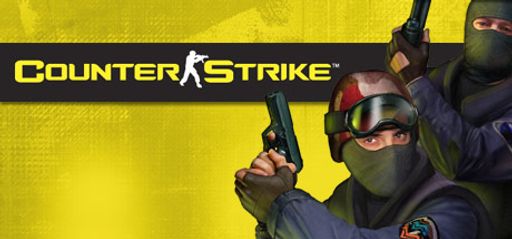Addictive Gameplay Loop
Counter-Strike, developed by Valve and first released in 1999, set the standard for team-based online shooters. It remains a top choice for players who love fast, strategic action. The game is simple to explain but hard to master. Two teams, Terrorists and Counter-Terrorists, compete on maps with clear goals—planting or defusing bombs or rescuing or guarding hostages. While these missions sound straightforward, what really keeps players hooked is teamwork. Teams can work together in many ways to outsmart each other.

Balancing Passion and Completionist Goals
As someone who likes finishing every part of a game, I have mixed feelings about Counter-Strike. Unlike story-driven shooters, there’s no single-player campaign or set of missions to mark off. Instead, the focus is entirely on multiplayer matches and climbing the competitive ranks. This can feel exciting—especially when you win a tough match. However, it can feel limiting if you enjoy checking off missions or collecting in-game items. For completionists, the lack of a clear progression path can make the game feel less satisfying over time.
Precise Shooting Mechanics and Famous Maps
Despite those concerns, Counter-Strike shines in its mechanics and map design. Each weapon handles in a specific way. Pistols, rifles, shotguns, and grenades all require practice to use well. For example, the AK-47 and M4A1 are popular rifles known for their power and accuracy. They have different recoil patterns that you need to learn. Maps like Dust II, Mirage, and Inferno are almost legendary. Each one mixes open areas with tight hallways to create tense, memorable moments. In fact, Dust II alone has helped make Counter-Strike one of the most-watched games in esports history.

Strong Teamwork and Communication
One of Counter-Strike’s biggest strengths is how it forces players to work together. Communication is key: sharing enemy locations, timing grenade throws, and coordinating routes can turn a close game into a victory. For example, a well-timed flashbang can give your team the few seconds you need to push through a chokepoint. This focus on teamwork builds real friendships and sparks competition—many players stick around for the chance to compete in online leagues, local tournaments, or even major events like the ESL Pro League and Valve’s own Majors, where prize pools can reach over a million dollars.
Challenges for New Players
However, Counter-Strike can be tough for beginners. The learning curve is steep: you need to memorize each map’s layout, practice recoil control, and learn when to buy armor or save money for future rounds. In addition, relying on random teammates can be a gamble—some matches go smoothly, but others can be filled with players who don’t communicate or follow the team’s plan. For completionists, the absence of clear goals or rewards makes it easy to feel stuck. Unlike games with unlockable weapons or storyline milestones, Counter-Strike only tracks your competitive rank (like Silver, Gold Nova, or Legendary Eagle), which doesn’t offer the same sense of “checking off” achievements.

Graphics, Sound, and Ongoing Support
Considering its age, Counter-Strike’s graphics are functional and focused on giving players clear visuals rather than flashy effects. Textures and models have improved over the years—especially with the release of Counter-Strike: Global Offensive (CS:GO) in 2012, which brought updated graphics, new maps, and better performance on modern systems. Sound design is crucial: you learn to listen for footsteps, gunshots, or a bomb being planted. These audio cues add layers of strategy—knowing where an enemy is coming from can be the difference between winning and losing.
Valve continues to support CS:GO with regular updates, new skins, and seasonal operations. The Steam Workshop community has contributed hundreds of custom maps, game modes, and weapon skins, keeping the game fresh. Plus, the skin-trading market lets players buy, sell, and trade cosmetic items—some rare knife skins or souvenir cases can be worth hundreds of dollars. This ongoing support and community-driven content help maintain interest, even many years after the original release.

Why Completionists Might Feel Left Out
For players who prefer single-player games or clear objectives, Counter-Strike’s open-ended nature can be a drawback. You won’t find hidden collectibles, story chapters, or side missions. Instead, your “progress” comes from improving your skill, climbing the matchmaking ranks, or earning money to buy new weapon skins. If you enjoy tracking stats—such as total kills, headshot percentage, or hours played—CS:GO does offer detailed leaderboards and match history. However, that’s a different kind of completionism compared to grabbing every shiny item or finishing a storyline.

Counter-Strike changed the face of online shooting games. Its tight shooting mechanics, iconic maps, and emphasis on teamwork helped create one of the biggest esports scenes in the world. Yet for completionists who like a clear path, it can feel like something is missing. If you thrive on strategic gameplay, community tournaments, and customizing your weapons, Counter-Strike is a must-play. Otherwise, if you’re looking for a game with a story, collectibles, or a defined end, you might want to try other titles first.
Rating: 3 out of 5 stars
Final Takeaway
Counter-Strike offers fast-paced, team-focused action and remains a top choice for online competition. However, if you prefer narrative-driven games with clear progression and lots of in-game collectibles, you may find Counter-Strike lacking in long-term goals.

